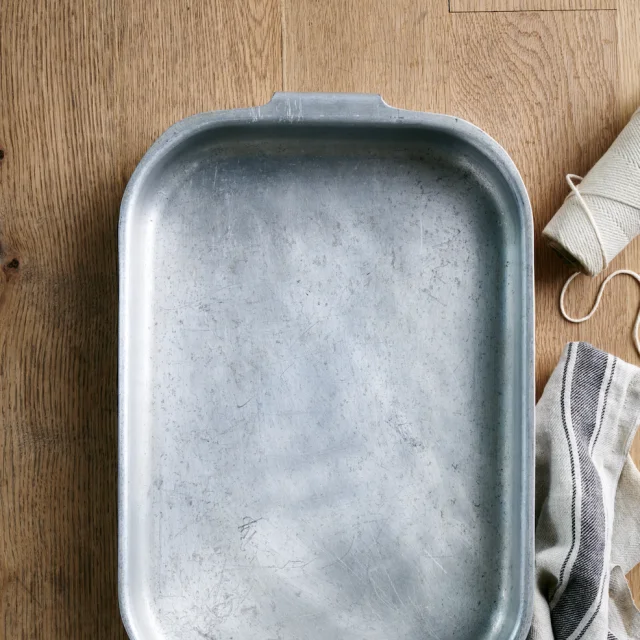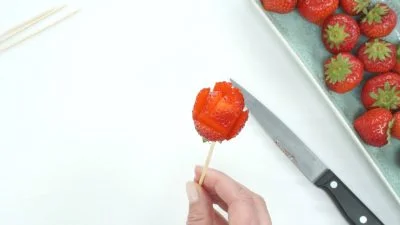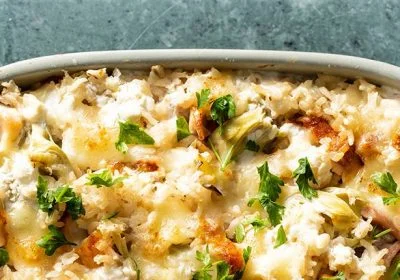In the league of food holidays, Thanksgiving is like the national championship. If you’re hosting the big event this year, odds are you’ve picked your starting lineup—turkey, stuffing, potatoes—but what about game day equipment? Whether it’s your first Thanksgiving or you’re a seasoned pro, the right kitchen tools are essential to pulling off the big meal—without game time panic.
We consulted the poultry pros in our test kitchen, who know a thing or two about prepping, cooking, and serving the ultimate Thanksgiving feast. Here’s their list of the kitchen tools you’ll definitely need—and which ones you can skip.
Must-Have Tools for Thanksgiving
Roasting Pan
This simple but indispensable pan is key to achieving an evenly cooked turkey with crisp, golden-brown skin. Get one with large handles (so it’s easier to pull the bird in and out of the oven) and high sides (to help reduce messy splatters) and a roasting rack (that allows heat to circulate all the way around the turkey). If you don’t want to make the investment, just get a disposable one from the grocery store. But we do think you’ll end up using a roasting pan again during the rest of the year. Turns out, they’re great for roasting veggies, making casseroles, and more.
Digital Meat Thermometer
Eliminate the guesswork while you roast your Thanksgiving turkey—and any other meats you cook throughout the year—with a digital thermometer. This easy-to-use tool ensures always-accurate results for a bird that’s fully cooked and safe to eat without becoming overcooked and dry. Just poke the thermometer into the thickest part of thigh and pull the turkey from the oven when it reaches 160 degrees. (Check once or twice—do not leave the thermometer in your turkey!) As it rests, the temperature should continue to climb to 165 degrees, the safe minimal temperature for any kind of poultry.
Carving Board
What separates a cutting board from a carving board? A deep groove, aka moat, around the edge that collects all the juices as you carve. For prepping raw turkey, stick with a non-porous plastic carving board but when it’s time to rest and carve the bird, put it on a heavy-duty wooden board with a juice grove. Bonus: Your board can double as a rustic serving vessel for meats, cheeses, and appetizers.
Sheet Pans
They’re a no-brainer for roasting and baking, but not all sheet pans are created equal. It’s worth the small investment for sturdy aluminum baking sheets, which heat and cool quickly, with rimmed edges to help keep liquids from spilling. Opt for the largest size that will fit in your oven (usually that’s a half-sheet pan, which measures around 13-by-18 inches). A bigger pan means less crowding—and better browning and more efficient cooking – for veggies, rolls, baked appetizers, and drying out bread for stuffing.
A Nice Pie Plate
Even if you get some help from the store with pre-made pie dough, a nice pie plate will take your Thanksgiving dessert to the next level. You can pop the pie into a pretty dish and it automatically looks fancier. If you’re making your crust from scratch, there are pros and cons to the different types. Glass pie plates, for example allow you to monitor the crust as it cooks, while metal ones heat up quickly and incredibly evenly.
Tools You Don’t Need for Thanksgiving
Electric Carving Knife
File this gadget under the category of unitasker. Yes, it can cut through turkey and other thick cuts of roasted meat, but that’s all it can do. And while the rapid motion of the blade works quickly, it lacks the precision to cut around bones and cartilage cleanly, leaving tasty bits of meat behind. Your best bet, according to our test kitchen, is a traditional carving knife. The thin, sharp blade (thinner than a chef’s knife) is perfect for making clean, even slices. Most carving knives are also slightly flexible, so it’s easier to cut around delicate wings and leg joints.
Turkey Baster
It might defy years of inherited Thanksgiving wisdom, but the truth is, basting turkey is for the birds. Repeatedly opening the oven door to baste (or, even worse, repeatedly removing the turkey from the oven) slows down cooking time. Basting is also the enemy when it comes to achieving crackling crisp, appetizing skin. Adding liquid increases the risk that your turkey skin will end up soggy. It’s also a myth that basting adds rich flavor, as most of the basting liquid stays on the surface and does not penetrate the meat.
Marinade Injector
This piece of equipment, which looks like it belongs more in a doctor’s office than the kitchen, also falls short of its promise to add more flavor to turkey. The same pitfalls of a basting apply—interrupting the roasting process slows cooking and prevents crisp skin from forming—with one additional drawback. Repeatedly piercing the bird while it cooks can draw out moisture, resulting in dry meat with even less flavor. Your best bet for an ultra-moist, delicious bird is brining ahead of time, which imparts deep flavor all the way through.




